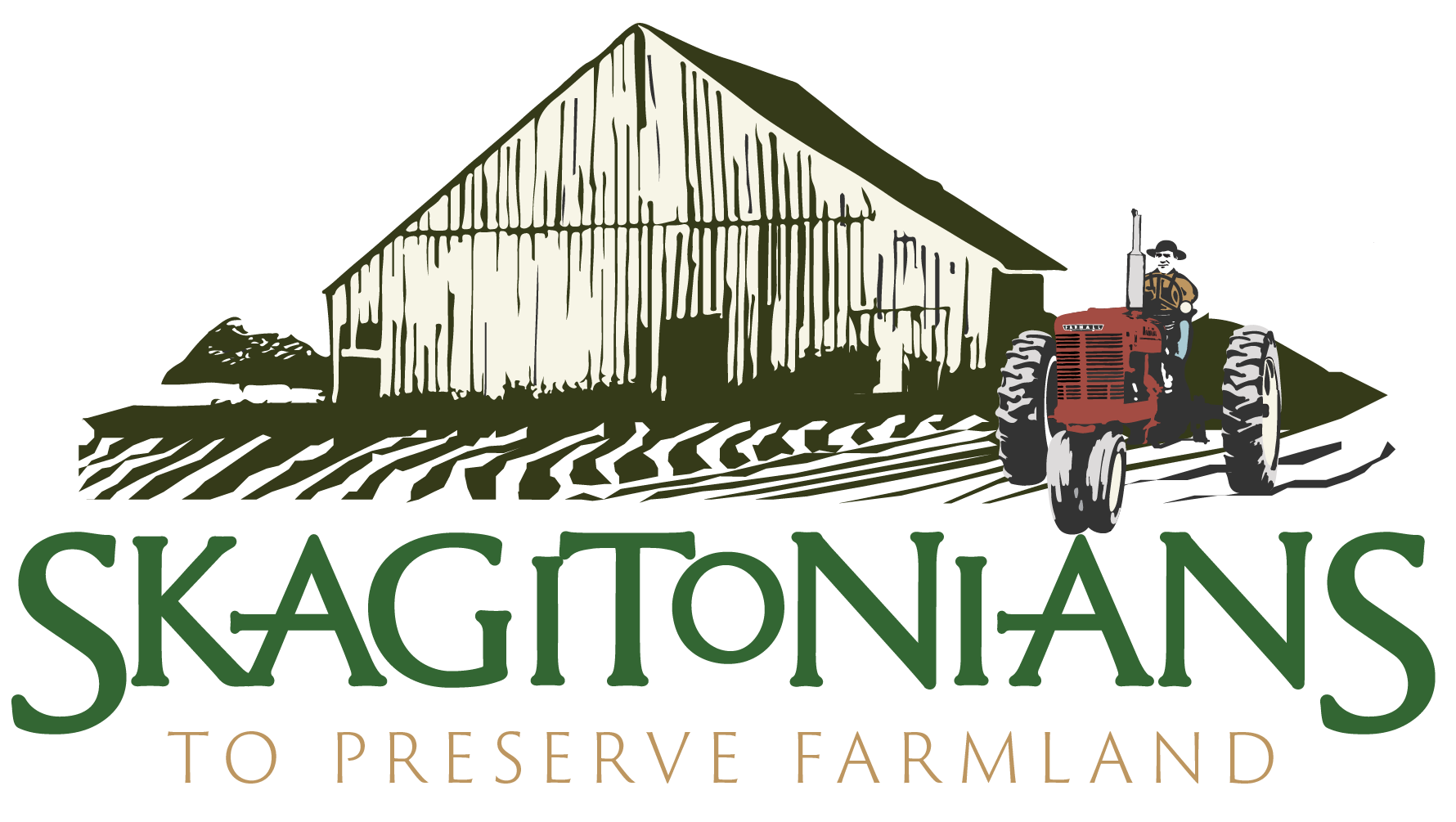An All-of-Family Farm: Hoehn Bend and Fender Farms
“We are a microcosm of what goes on in the upper Skagit Valley, where farms are smaller, and the main crops are sod and cattle grass.”
Photo: Craig Harrold
On a warm July afternoon on Hoehn Bend Farm, Heidi is resting after birthing a 50-pound baby.
The new mom is a gorgeous Dexter cow, an even-tempered Irish cattle breed that is just a little over four feet tall.
“If you put this variety next to Holsteins they would be a collection of big dogs,” says Terry Sapp, who raises cattle, chickens and miniature donkeys with wife Jean Eagleston.
The 50 Dexter cattle they raise for meat are sold through the North Cascades Meat Producers Cooperative (NCMPC). The “girls” and their calves live on Hoehn Bend Farm. The market steers, yearling steers and Jagger the bull graze on nearby Fender Farm, where Sapp grew up.
Both farms are tucked into the narrow green valley between Lyman Hill and the Skagit River, yet they couldn’t be more different. A tree-lined creek meanders through Fender Farm and its barn, orchard, berry patch and outbuildings.
Out back is Mother’s Woods, a seven-acre woodlot that Sapp’s mother preserved as wildlife habitat some decades ago. Near the house is a Little Hoover White House—one of the 2.3 million “sanitary privies,” or outhouses, that Works Progress Administration workers built in rural areas during the 1930s.
Sapp’s grandparents made a good living on their 30-acre farm. “It was an all-of-family farm,” says Sapp. Everyone in the family helped out, raising hogs, sheep and dairy cows, and selling eggs and milk in town.
Sapp’s parents added 10 acres when they took over, but supplemented their farm earnings with off-farm jobs. As an adult, Sapp left the farm altogether, living and working in California and Seattle. He inherited and expanded Fender Farm and in 2008 bought the 30-acre Hoehn Bend Farm, a former dairy farm with a handful of Dexter cattle. The cattle were adorable, so the couple bought them, too.
Where Fender Farm has a dreamy, timeless look and no straight lines, Hoehn Bend is all business. Every acre and building is focused on birthing, feeding, and raising cattle.
When it’s dry, the cattle graze on the pasture, eating supplemental hay that is grown, cut and baled on both farms. When it’s wet, the 600- to 1,000-pound Dexter cattle must stay in the cement-floored barn to avoid destroying soggy soil. Eagleston and Sapp feed them, clean barns, fix machinery and pump manure into the manure lagoon where it is stored until it can be spread on fields in warmer weather.
Photo: Hoehn Bend Farm
Occasionally, when it’s very cold and the ground stays frozen, the cattle can get out and run around.
“Oh my gosh, they are happy when that happens, especially when it snows!” says Eagleston.
Spring and summer are calving season. Kathleen Minor, a nurse who lives on Fender Farm, has learned the signs indicating that a heifer or cow is close to giving birth. “You learn by doing,” says Minor. “If you know their normal quirks, you can tell if they start acting funny or aren’t feeling well.
When a mom-to-be is in distress, Minor warms up the calving pen and helps them in. Dexter cattle usually give birth easily, but if a calf needs to be pulled from its mother, Minor can help.
Many of Sapp and Eagleston’s neighbors also raise beef cattle. “We are a microcosm of what goes on in the upper Skagit Valley, where farms are smaller, and the main crops are sod and cattle grass,” says Sapp. “East of Sedro-Woolley is one big cattle farm—owned by 200 people.”
Upper valley farmers face many challenges. Ag land is being subdivided for housing. Water is problematic. Without enough water to irrigate their pasture in 2021, Sapp and Eagleston could only cut grass twice. While they have a water right, they wonder whether it will be enough in the future.
Photo: Craig Harrold
The meat processing bottleneck is a huge issue. As a member of NCMPC, Hoehn Bend Farm can access its USDA-approved mobile slaughter unit and meat processing facility, and sell their meat to retail outlets. But dozens of other farmers are languishing on the cooperative’s waiting list.
“Small cattle farmers can’t sell all their product by having friends buy quarters, halves and wholes. We need USDA approval to reach a bigger commercial market,” says Sapp. “Without a product and a market, you can kiss these small farms goodbye.”
Sapp advocates for upper valley farmers by serving on the Skagit County Agricultural Advisory Board, whose 12 members advise County Commissioners and Administrator on plans, policies, and programs that impact agriculture.
He’s also present for discussions of water rights and instream flow generally considered the province of the big farmers west of I-5. “I don’t produce $10,000 of potatoes an acre,” says Sapp. “But I’m at the table, because I care and I farm.”
A former teacher, he also cares about leaving a legacy. From 2012- 2019, the couple operated a farm stay business that introduced dozens of families to life among livestock and pasture. Kids loved watching calves being born and discovering that eggs really do come from chickens.
Going forward, Sapp would like to find a way to immerse more people in the ecology and economy of his two farms and their bugs, cows, creeks and woods
Photo: Anne Basye
In the meantime, he’s all in on the high-level conversation around how the lands of the Skagit basin will be used and respected.
“We are in a nexus of figuring out what the Skagit Valley will be,” he says, “and whether Fender Farm and places like it get to be a part of it.”
Story by Anne Basye: info@skagitonians.org




